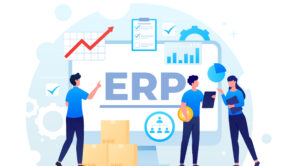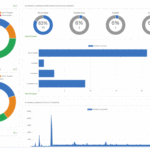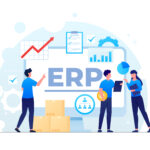How to Solve the Biggest Problems With Cloud ERP software
With the advent of Cloud ERP software like NetSuite, Expand ERP, Ramco and the likes are offering services at investments much lower than the traditional approach. The pay per use has reduced the risk exposure for the companies. This does not mean that we can afford to lose on time and resources implementing systems. Some tips for managing your business management software so that the organization can reap maximum value from automation and integration are as follows.
- First and foremost make a plan and timesheet for implementation to a reasonably detailed level. This will help keep project on track and all stakeholders can be ready beforehand with prerequisites for implementation day by day.
- The role of top management is of utmost importance. Resources are ever busy and overloaded with regular work. For the current resources to manage time for new systems is difficult and this is the major reason for all erp failures. Management must review the progress at regular and short intervals and honestly evaluate the progress and resource allocation. Resources must be assigned defined task and block a regular number of hours for ERP implementation. It can be as low as 1 hr. But regular time allocation is extremely important.
- Any erp vendor with good track record for a few years can be your vendor. However if the vendor has done similar industry implementation is a big advantage.
- Keep your requirements with logical design ready; do not let any company resource except core team to finalize workflow. Be flexible in accepting the workflow offered without compromising the automation.
- Training is the most neglected area. A well tracked, result oriented training with live data can be very effective. Users getting real time output can be very motivating and encouraging. They can see benefits of using erp they have never visualized.
- Try to switch from legacy system to new system at the earliest. It is very easy to fall back on legacy system at the smallest issue that may not be even a showstopper. No implementation or customization can be without errors. Stakeholders need to practice reasonable amount of tolerance to accept errors and allow the vendor time to correct it but stay on track rather than going back to legacy system.
- Identify you practical need for data migration. If implementation can be aligned with financial year then you can avoid migration. However this should not be a deterrent. Volume data can easily be migrated with good software products. Keep migration only for 1 financial year and do not risk for entire migration of company history.
Today’s technology may not cost millions for a good erp implementation and may not require any infrastructure investment but it can cost dearly in terms of time and effort if not taken seriously by top management. There are no magic, keep your wish list practical and focus on core result areas. If you take up erp implementation it will just not automate process but reengineer it for efficiency and productivity of company and its people.
Author Bio:

Vineet Bansal is a geek in the true sense and loves to write on technology especially cloud erp software He is the owner of Expand ERP, a cloud based erp solution provider. Other interests include sports, music and adventure sports.















